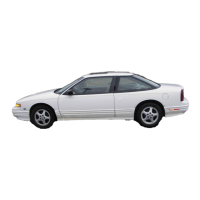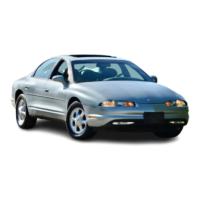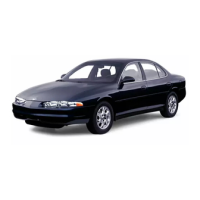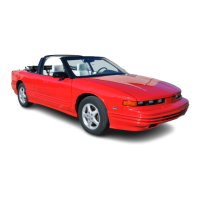PARK (P):
This
locks your front wheels.
It’s
the best
position to use when you start your engine because your
vehicle can’t move easily.
r
It
is dangerous to get out of your vehicle if the
shift lever is not fully in
PARK (P)
with the
parking brake firmly set. Your vehicle can roll.
Don’t leave your vehicle when the engine is
running unless you have to. If you have left the
engine running, the vehicle can move suddenly.
You or others could be injured. To be sure your
vehicle won’t move, even when you’re on fairly
level ground, always set your parking brake and
move the shift lever to
PARK
(P).
See “Shifting Into
PARK (P)”
in the Index. If
you’re pulling
a
trailer, see “Towing
a
Trailer’’ in
the Index.
Ensure the
shift
lever
is
fully in PARK
(P)
range before
starting the engine.
Your
Oldsmobile has a brake-transaxle
shift
interlock. You have to fully
apply
your regular brakes
before
you can
shift
from
PARK
(P)
when the ignition is
on.
If
you cannot
shift
out of PARK
(P),
ease pressure on
the
shift
lever
--
push the
shift
lever
all
the way into
PARK (P) and
also
release the
shift
lever button on floor
shift
console models as you maintain brake application.
Then move the
shift
lever into the gear you wish. (Press
the
shift
lever button before moving the
shift
lever on floor
shift
console models.)
See
“Shifting Out of PARK (P)”
later in
this
section.
REVERSE (R):
Use
this gear to back up.
NOTICE:
Shifting to
REVERSE (R)
while your vehicle is
moving forward could damage your transaxle.
Shift to
REVERSE (R)
only after your vehicle
is stopped.
To
rock your vehicle back
and
forth to get out of snow,
ice or sand without damaging your transaxle, see
“Stuck:
In
Sand. Mud, Ice
or
Snow” in the Index.
2-22
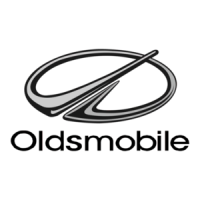
